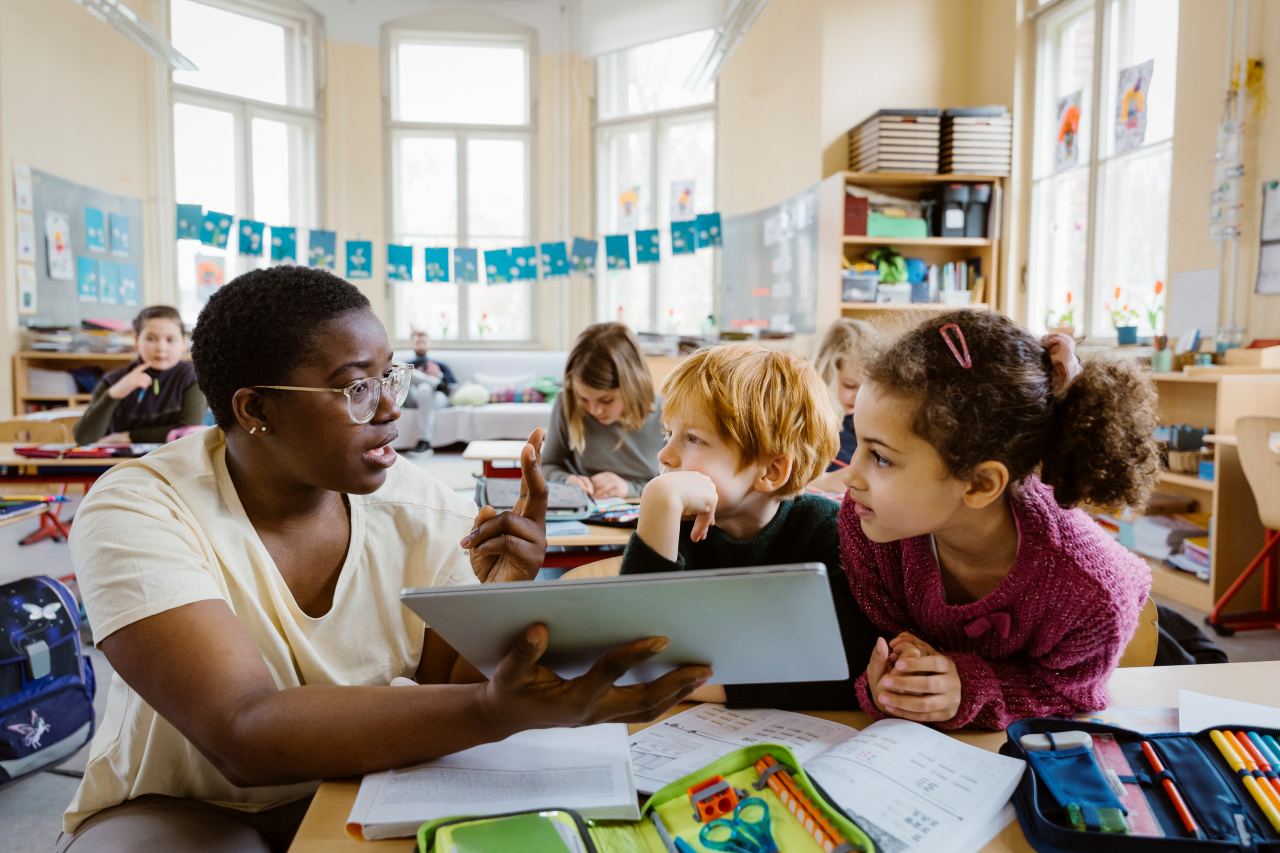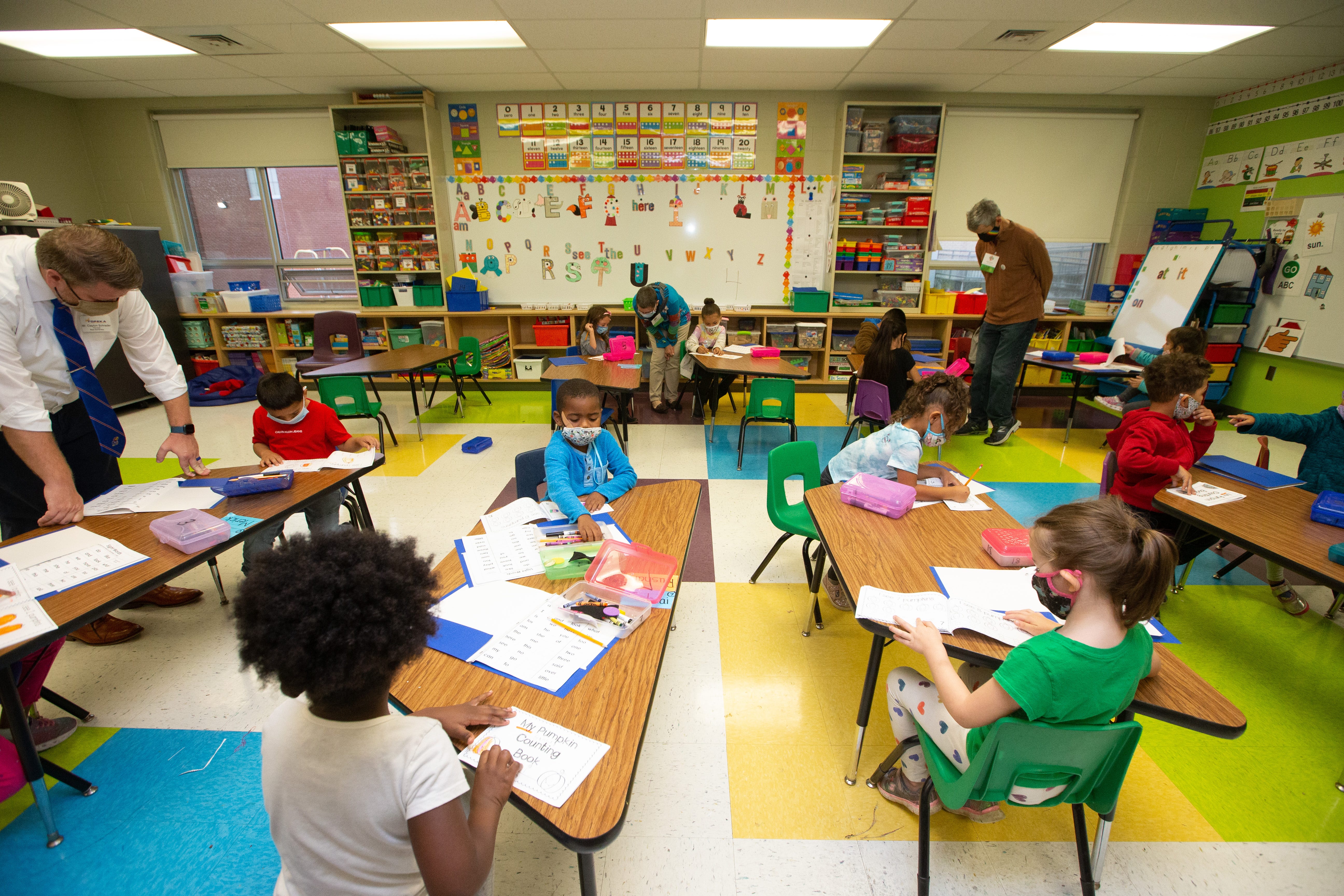Unlock Your Child’s Potential with Primary Science Tuition Singapore
Unlock Your Child’s Potential with Primary Science Tuition Singapore
Blog Article
A Comprehensive Overview to the Various Discovering Techniques in Key Science Direction
The expedition of diverse learning techniques in key science direction presents an opportunity for instructors to improve trainee interaction and understanding substantially. By analyzing hands-on discovering methods, inquiry-based methods, and joint techniques, we can determine efficient techniques that provide to numerous finding out styles.

Hands-On Learning Techniques
Hands-on knowing techniques play an essential duty in key science instruction, engaging students in energetic exploration and trial and error. These methods allow students to connect straight with sensations and materials, cultivating a deeper understanding of clinical concepts. By utilizing manipulatives, models, and real-life experiments, teachers create a setting where pupils can observe, assume, and test their ideas.
Such techniques not just boost understanding but also grow crucial reasoning and analytical abilities. When pupils participate in tasks like developing easy devices, growing seeds, or carrying out chemical reactions, they are motivated to ask concerns and seek solutions through their own monitorings. This experiential approach assists to debunk complicated clinical concepts, making them extra accessible and relatable.
Additionally, hands-on learning promotes partnership among peers, as pupils frequently operate in groups to perform experiments or share findings. This synergy not only enhances their understanding experience but additionally develops vital social skills. Ultimately, integrating hands-on techniques in primary science direction fosters a lifelong love of discovering and curiosity about the environment, laying a strong structure for future academic searches in science and past.
Inquiry-Based Discovering
Inquiry-based understanding is an educational technique that motivates pupils to ask concerns, investigate sensations, and build their very own understanding of clinical concepts. This technique shifts the emphasis from standard teacher-led guideline to an extra student-centered experience, where learners take the initiative in their academic trip. By fostering curiosity, inquiry-based understanding advertises deeper involvement with the material, allowing trainees to check out topics in a meaningful context.
In technique, this method often involves hands-on experiments, observations, and crucial thinking tasks that align very closely with the scientific technique. Pupils are urged to formulate hypotheses, layout examinations, and evaluate information, which grows crucial abilities such as logical and analytic thinking. The duty of the instructor in this structure is to assist in exploration, leading pupils via the query procedure while urging independent thought and cooperation.
In addition, inquiry-based understanding nurtures a feeling of possession over the discovering process, inspiring trainees to go after knowledge proactively. This approach not just improves understanding of scientific concepts but additionally cultivates a long-lasting love for discovering, furnishing students with the skills necessary to browse a significantly intricate world.
Collaborative Learning Approaches
Collective learning strategies equip students to take part in purposeful interactions with peers, fostering a common duty for their instructional end results. In primary science guideline, these techniques urge learners to collaborate to explore clinical principles, resolve problems, and conduct experiments (primary science tuition Singapore). By getting involved in group activities, students can leverage diverse perspectives, permitting richer understanding and retention of clinical expertise
One key facet of collective discovering is the focus on communication skills. Trainees should articulate their ideas, listen actively to others, and work out like this ideas, all of which are important proficiencies in both real-world and scholastic contexts. This social interaction not only enhances their understanding of clinical principles yet also promotes teamwork and conflict resolution abilities.
In addition, joint discovering typically results in raised motivation and involvement. They are more most likely to take ownership of their discovering journey when trainees see the worth of their contributions within a team. Educators can facilitate this procedure by making structured team jobs that align with educational program goals while giving assistance on efficient cooperation techniques. In general, including joint understanding techniques in main scientific research instruction grows a vibrant learning environment that prepares students for future scholastic and social obstacles.
Technology Assimilation in Scientific Research
The combination of technology in primary scientific research guideline improves finding out experiences by supplying innovative devices and resources that support numerous mentor methods, consisting of collaborative knowing - primary science tuition Singapore. The use of digital systems, simulations, and interactive applications permits pupils to involve deeply with clinical concepts, facilitating a much more hands-on strategy to knowing
Digital research laboratories, for instance, enable learners to conduct experiments safely and effectively, promoting inquiry-based learning. These devices can replicate real-world clinical situations, enabling pupils to imagine complex processes that would be hard to reproduce in a typical class setting. Technology cultivates interaction and collaboration amongst students, as they can share searchings for and function with each other on tasks with on the internet systems.
Additionally, multimedia presentations and educational video clips can enhance lessons by dealing with diverse understanding styles, making abstract ideas more accessible. Information evaluation tools likewise empower trainees to accumulate and translate clinical data, strengthening vital believing abilities. Generally, the calculated consolidation of modern technology in main science direction not only improves engagement but additionally prepares students for a technologically sophisticated society, equipping them with essential skills for future clinical undertakings.
Separated Guideline Methods
Differentiated guideline approaches are vital for attending to the varied needs of learners in key science education. These techniques make it possible for teachers to customize their training techniques to accommodate differing abilities, passions, and discovering designs within the classroom. By utilizing distinguished guideline, instructors can create a comprehensive environment that cultivates engagement and boosts understanding of scientific principles.
One effective technique is to use adaptable grouping, which allows students to team up with peers at comparable ability levels or with differing viewpoints. This approach encourages peer understanding and advertises important thinking. Furthermore, providing options in jobs can equip trainees, allowing them to select tasks that reverberate with their passions while still meeting curricular purposes.
Additionally, integrating tiered assignments is one more beneficial technique. By designing jobs with varying degrees of complexity, educators can ensure more information that all trainees are appropriately challenged, regardless of their efficiency. Making use of developmental analyses to assess comprehending more makes it possible for teachers to readjust their training techniques dynamically, ensuring that each learner obtains the support they require.
Eventually, applying separated direction techniques in key science education and learning not only boosts pupil discovering outcomes yet likewise cultivates a passion for science, preparing trainees for future academic searches.

Final Thought
In recap, efficient key science check out this site instruction necessitates a diverse approach that encompasses hands-on understanding, inquiry-based approaches, and collaborative strategies. The combination of technology and distinguished guideline better caters to diverse understanding designs, promoting an atmosphere for expedition and important thinking. By executing these approaches, teachers can improve trainee involvement and understanding, eventually nurturing a long-lasting interest for scientific research and questions. Such detailed methodologies are crucial for creating educated and interested future researchers.
The exploration of varied learning methods in primary scientific research guideline presents a chance for teachers to boost pupil engagement and comprehension substantially.Hands-on understanding strategies play a pivotal duty in primary scientific research guideline, engaging pupils in active exploration and testing.Inquiry-based understanding is an instructional technique that motivates trainees to ask inquiries, check out phenomena, and build their very own understanding of scientific concepts.Collective knowing strategies empower pupils to engage in meaningful communications with peers, fostering a shared responsibility for their educational outcomes. In general, integrating collaborative knowing techniques in primary scientific research guideline grows a vibrant knowing setting that prepares students for future scholastic and social difficulties.
Report this page